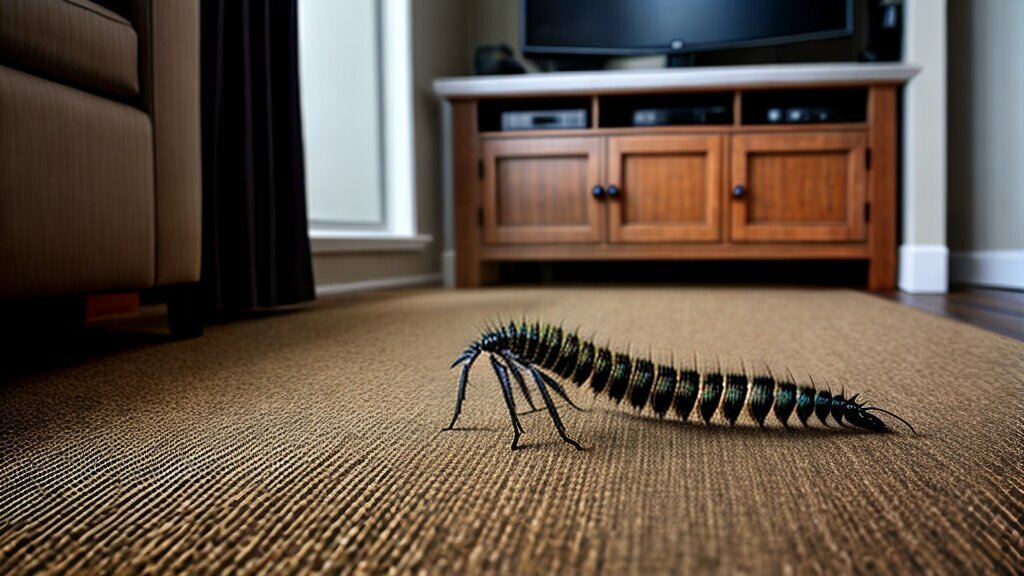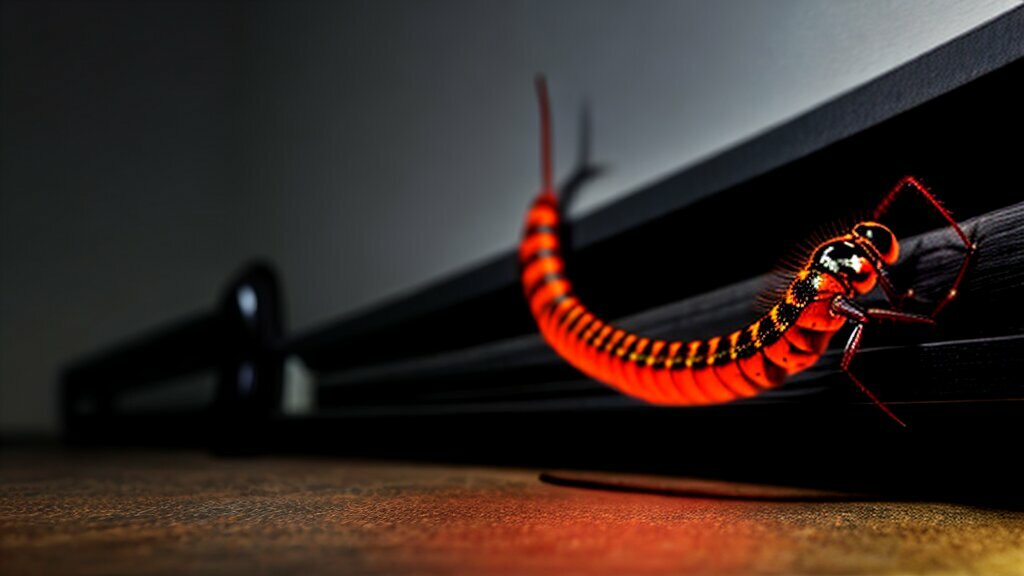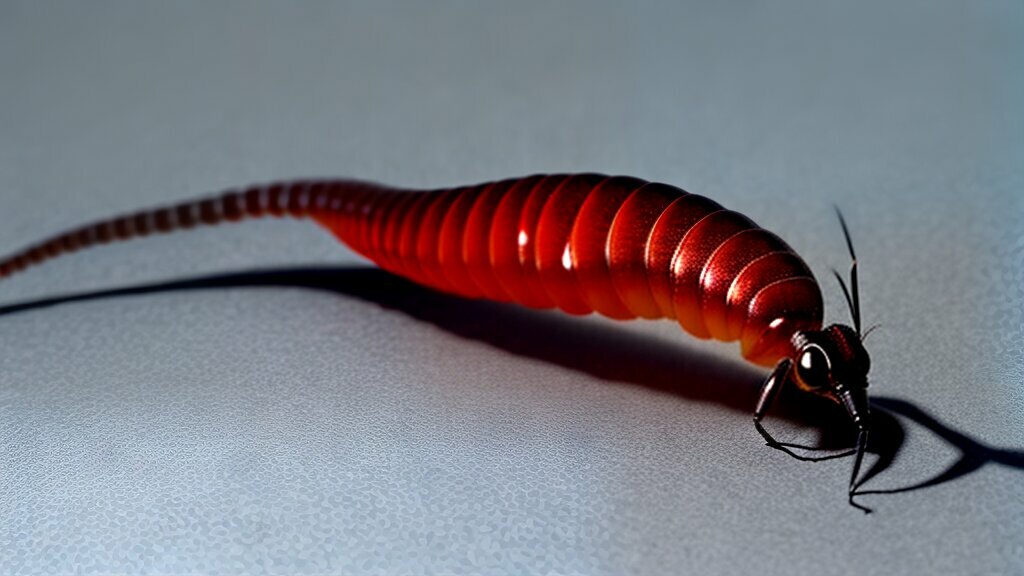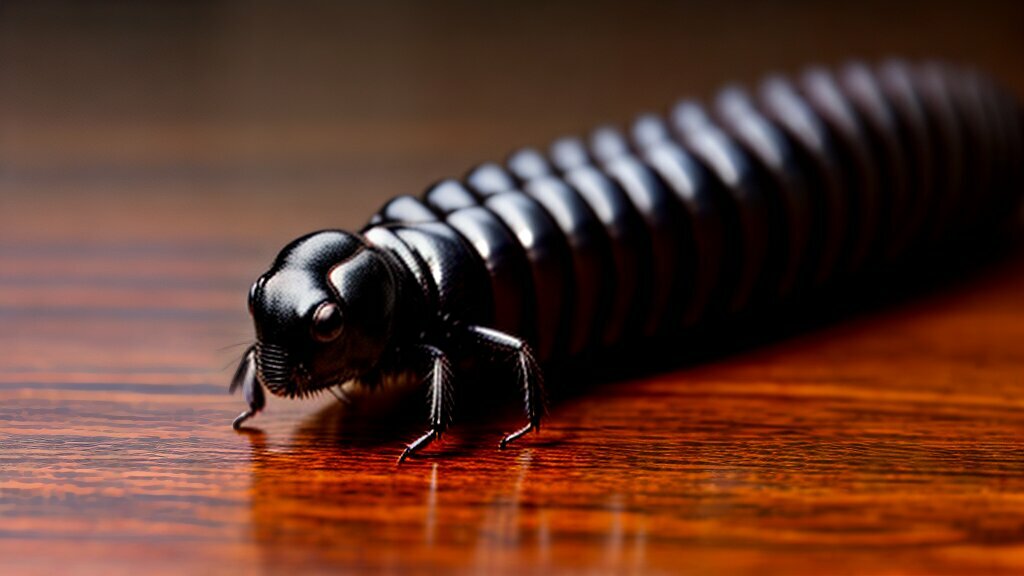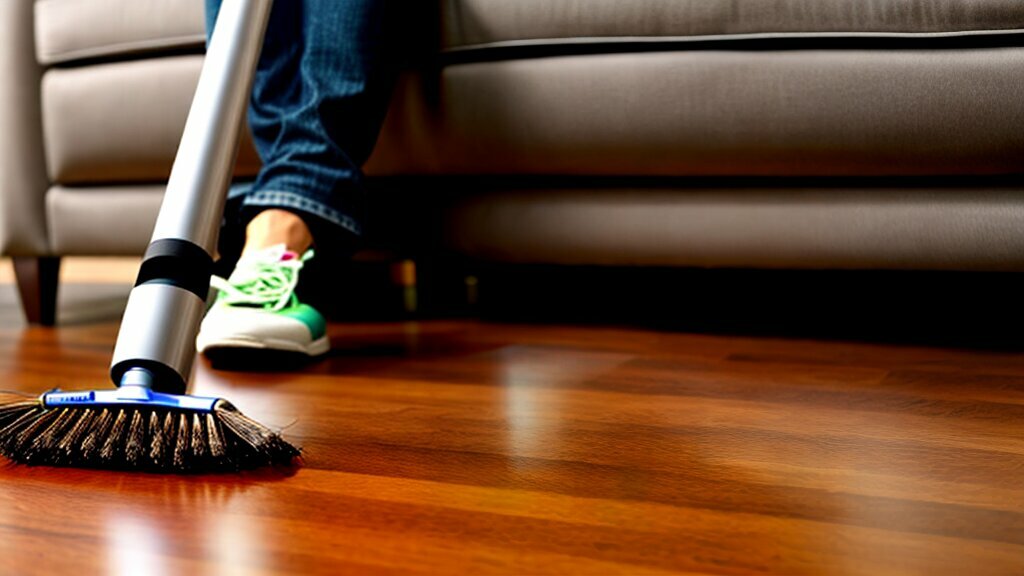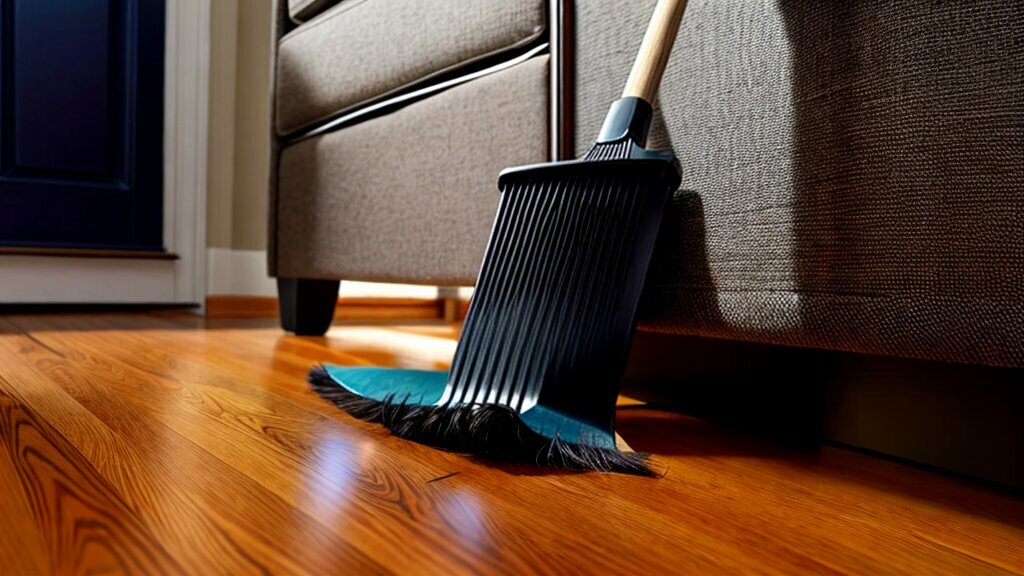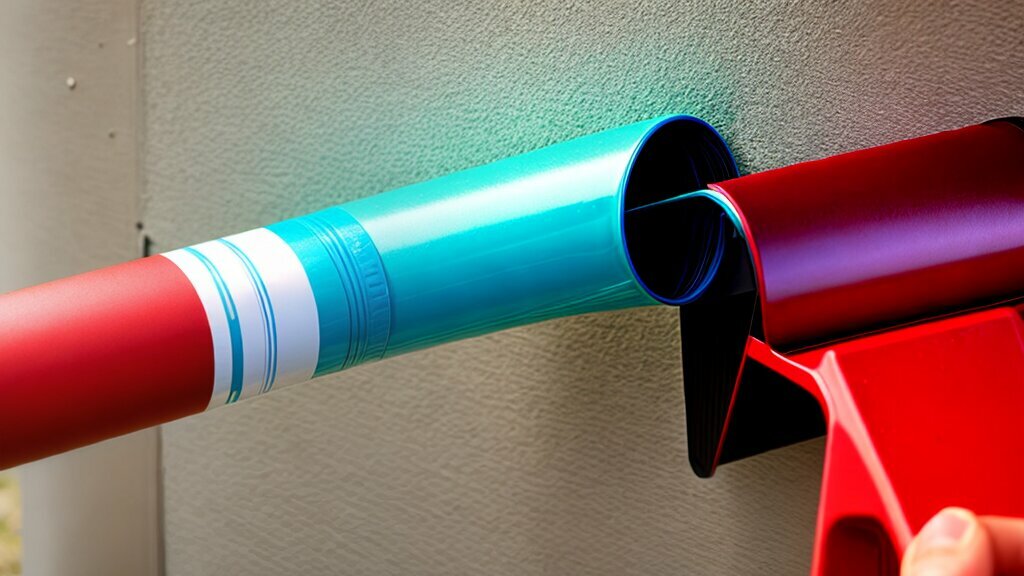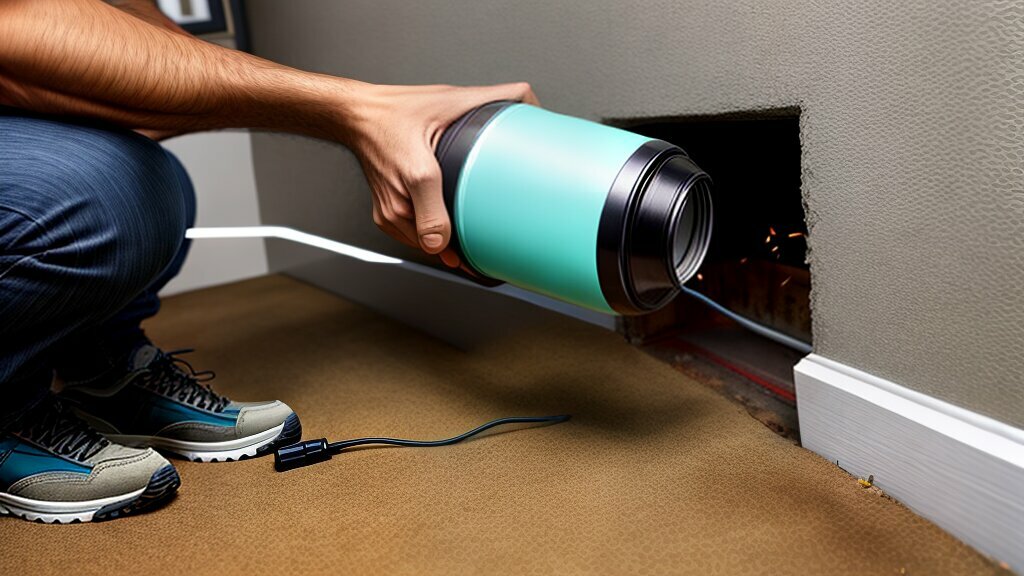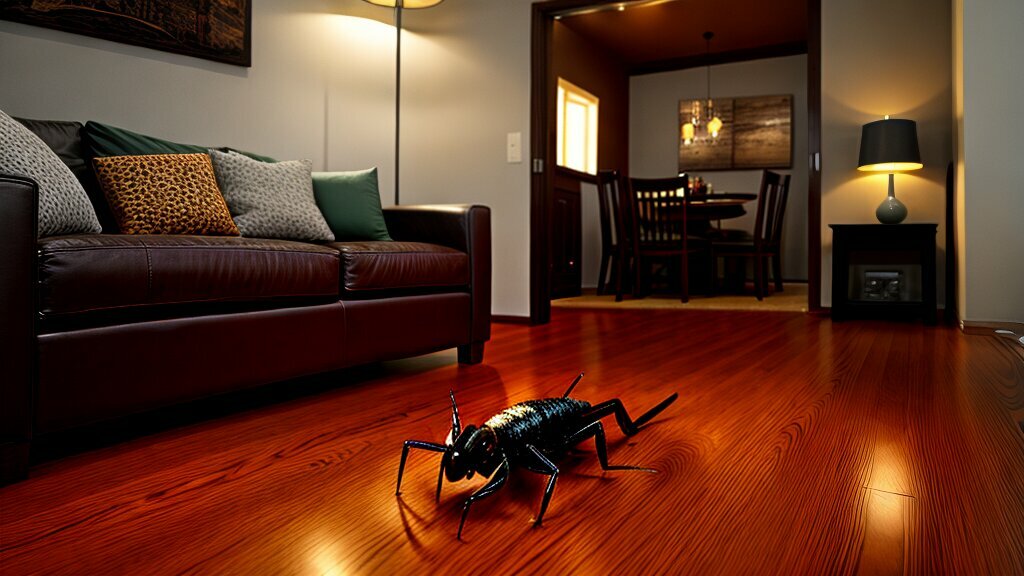Discovering centipedes or millipedes in your house can be an alarming experience. These pests can not only be unsightly but can also cause harm with their venomous bites. Therefore, it is important to identify and prevent these creatures from invading your living space.
In this article, we will provide you with helpful information about centipedes and millipedes found in houses, including their habits, physical characteristics, and methods for controlling and preventing them. We will also provide tips on natural and chemical approaches to keep these pests at bay.
Key Takeaways:
- Centipedes and millipedes can pose a threat to humans and pets.
- Identification of these pests is crucial for proper control and prevention.
- Natural and chemical methods can be effective for preventing and eliminating these pests.
Understanding Centipedes and Millipedes
Centipedes and millipedes are two common arthropods that are often found in homes. While they may look similar at first glance, there are significant differences between the two.
Centipedes are elongated animals with flattened bodies, usually ranging from 1 to 6 inches in length. They have numerous legs, with each body segment bearing one pair of legs. They are usually brownish-yellow or reddish-brown in color and have prominent antennae. They are known for their quick movements and their ability to capture and kill prey with their venomous front legs.
Millipedes, on the other hand, have a more cylindrical body shape and are usually longer than centipedes, ranging from 1 to 4 inches. They have many body segments, with each segment bearing two pairs of legs. They move slowly and are not venomous. They are usually brown or black in color and have a hard exoskeleton that protects them from predators.
Both centipedes and millipedes are nocturnal and prefer damp, dark environments. They may enter homes in search of food or shelter, particularly during the colder months of the year.
Centipedes vs. Millipedes in Homes
While centipedes are considered beneficial arthropods as they prey on other insects, millipedes may become a nuisance in homes as they can damage plants and sometimes emit an unpleasant odor. Understanding the differences between centipedes and millipedes can help homeowners identify and address a potential infestation.
Identifying Centipedes in the House
Centipedes are elongated, worm-like creatures that belong to the Class Chilopoda. They have a flattened body with numerous segments, each of which contains a pair of legs ranging from 10 to 300, depending on the species. Most centipedes found in houses are brown or reddish-brown and can grow up to 6 inches long.
Centipedes have a pair of elongated antennae that they use to sense their environment. Their sharp mandibles or mouthparts are modified for injecting venom into their prey, which typically consists of insects, spiders, and small animals. Centipedes can move quickly, making them hard to catch.
Common species of centipedes found in houses include the House Centipede (Scutigera coleoptrata), which has 15 pairs of long legs, and the Giant Redheaded Centipede (Scolopendra heros), which can grow up to 8 inches long and is reddish-brown in color.
Signs of a centipede infestation in the house include the presence of shed exoskeletons, dead insects, and centipede droppings. Centipedes prefer moist environments and are often found in basements, bathrooms, and kitchens, where they can easily access their prey.
Identifying Millipedes in the House
Millipedes are commonly encountered pests in households and can infest a variety of areas such as basements, bathrooms, and crawl spaces. They are elongated, cylindrical, and have numerous pairs of legs, typically ranging from 30 to 400.
One of the most common species of millipedes found in homes is the garden millipede. They are dark brown in color and can measure up to 1 inch in length. In some cases, they may emit a foul-smelling liquid when disturbed, which can be an unpleasant experience.
Signs of millipede infestations in homes include the presence of these pests in large numbers, as well as damage to plants, fruits, and vegetables in gardens outside the home.
To identify millipedes in the house, look for long, narrow, and segmented bodies with numerous pairs of legs. If you notice any foul odors or damage to plants, it is possible that millipedes have infested your home.
Dealing with Centipedes in the House
Centipedes are not only unsightly but can also pose a danger to humans and pets. Getting rid of centipedes in the house can seem like a daunting task, but with the right approach, it is possible to eliminate these pests from your home.
The first step in dealing with centipedes in the house is to identify where they are coming from. Centipedes are attracted to moisture, so you should check for any leaks or areas where water may be pooling, such as in basements or crawl spaces.
Once you have identified the source of the problem, there are several ways to get rid of centipedes in the house. One of the most effective methods is to use sticky traps, which can be placed in areas where centipedes are likely to travel.
| Method | Description |
|---|---|
| Insecticides | Insecticides can be used to kill centipedes, but it is important to read the label and follow the instructions carefully. |
| Natural repellents | Peppermint oil, vinegar, and citrus spray can help to repel centipedes. |
| Professional extermination services | If the infestation is severe, it may be necessary to call in a professional exterminator to eliminate the centipedes. |
It is important to keep in mind that getting rid of centipedes in the house is only part of the solution. You should also take steps to prevent them from returning. This includes sealing any cracks or crevices around your home, reducing moisture levels, and keeping your home clean and clutter-free.
With these methods, you can effectively deal with centipedes in your home and create a safer, more comfortable living space for you and your family.
Getting Rid of Millipedes in the House
Millipedes are another common pest that can invade homes, especially during the cooler months. They are attracted to moist and dark environments, such as basements and crawl spaces. However, they can also be found in other areas of the house, including bathrooms and kitchens.
One of the best ways to get rid of millipedes in the house is to eliminate their habitat. This can be achieved by removing any organic debris, such as fallen leaves and grass clippings, from around the foundation of the house. It is also important to ensure that gutters and downspouts are kept clean and clear of debris, as this can create a damp environment that millipedes love.
If millipedes have already entered the house, there are several steps that can be taken to get rid of them. One of the most effective methods is to reduce the humidity levels in the house by using a dehumidifier or air conditioner. This will make the environment less favorable for millipedes.
Another option is to use insecticides. However, it is important to choose a product that is specifically designed for millipedes, as general insecticides may not be effective. Insecticide sprays can be applied around the perimeter of the house, as well as in areas where millipedes are commonly found.
When using insecticides, it is important to read and follow the instructions carefully. Some products may require multiple applications, and it is important to use the recommended amount to avoid putting pets or family members at risk.
As with centipedes, habitat modification is key to preventing millipedes from entering the house. This can be achieved by maintaining a clean and dry environment, sealing cracks and gaps in the foundation or walls, and ensuring that all doors and windows are properly sealed.
Overall, getting rid of millipedes in the house requires a combination of habitat modification and targeted control measures. By taking steps to eliminate their habitat and using effective control methods when necessary, homeowners can keep these pests at bay and enjoy a pest-free home.
Preventing Centipedes in the Home
Centipedes are often attracted to homes that have a lot of moisture, as well as places where they can hide. Preventing centipedes from entering your home can help reduce the risk of an infestation. Here are some tips:
| Tip | Description |
|---|---|
| Seal cracks and crevices | Centipedes can enter homes through even the tiniest of cracks and crevices. Seal up these openings using caulk or weather-stripping to keep them out. |
| Reduce humidity levels | Centipedes are attracted to moist environments. Use a dehumidifier, fix leaks, and ensure proper ventilation to reduce humidity levels in your home. |
| Maintain cleanliness | Regularly clean all areas of your home to eliminate hiding spots for centipedes. Pay special attention to damp areas such as the bathroom and basement. |
By taking the above preventive measures, you can greatly reduce the chances of a centipede infestation in your home.
Millipede Control for Houses
If you’re dealing with millipedes in your house, there are several things you can do to control their population. One of the first steps is to remove any organic debris around your house, such as fallen leaves or mulch. This will reduce their habitat and discourage them from entering your home.
Another important step is to implement moisture control measures. Millipedes thrive in damp environments, so you should fix any leaks or water damage as soon as possible. You can also use a dehumidifier to reduce the humidity levels in your home.
If these measures are not effective, you may need to use insecticides as a last resort. However, it’s important to use them safely and follow the instructions carefully. Avoid using insecticides near food or water sources, and keep pets and children away from treated areas.
Remember, prevention is key when it comes to millipede control. By taking steps to reduce their habitat and control moisture levels in your home, you can prevent them from becoming a problem in the first place.
Organic Debris Removal
| Organic Debris | Removal Method |
|---|---|
| Leaves | Rake and dispose of in yard waste bags |
| Mulch | Remove and replace with non-organic mulch or gravel |
| Wood piles | Store off the ground and away from the house |
Moisture Control Measures
- Fix leaks and water damage promptly
- Use a dehumidifier to reduce indoor humidity levels
- Ensure proper ventilation in bathrooms and kitchens
- Install gutters and downspouts to direct water away from the house
Insecticides
If you choose to use insecticides, make sure you follow the instructions carefully and use them safely. It’s important to choose a product labeled for millipedes and use it only on areas where they are present. Avoid applying near food or water sources, and keep pets and children away from treated areas.
Centipede Infestation Indoors: Signs and Solutions
Centipedes may invade homes and buildings in search of prey, shelter, or moisture. Although they are not usually harmful to humans, their presence can be unsettling and may indicate underlying issues in the building. Here are some signs of a centipede infestation indoors:
| Signs of a Centipede Infestation | Solutions |
|---|---|
| Presence of live centipedes or their shed exoskeletons | Use sticky traps or contact a professional pest control service |
| Unpleasant musty or damp odor | Address underlying moisture issues by fixing leaks, improving ventilation, or using a dehumidifier |
| Increased activity of prey insects such as spiders, cockroaches, or silverfish | Implement a comprehensive pest management plan to reduce food sources and nesting areas for centipedes and their prey insects |
Remember that eliminating centipedes is only a temporary solution. It is essential to address the underlying factors that attract them to the building, including excess moisture, cracks, and crevices, and a lack of cleanliness and sanitation.
When dealing with centipede infestations, it is important to avoid using DIY pest control methods that may be ineffective and harmful to humans and pets. Instead, consider contacting a professional pest control service that can provide safe, environmentally-friendly, and effective solutions.
Natural Ways to Get Rid of Centipedes in the House
While chemical solutions can be effective in getting rid of centipedes, there are several natural ways to repel these pests from your home.
1. Essential Oils: Essential oils such as peppermint, tea tree, and lavender can be used to repel centipedes. Mix a few drops of oil with water in a spray bottle and spray around the house to keep centipedes away.
2. Diatomaceous Earth: Diatomaceous earth is a natural powder that can be applied to areas where centipedes hide, such as dark corners or crevices. The powder will dehydrate the centipedes and kill them.
3. Cleanliness: One of the simplest ways to prevent centipedes from entering your home is by maintaining a clean environment. Vacuum and dust regularly, especially in areas where centipedes are often found.
4. Reduce Moisture: Moisture is a common attractant for centipedes. Fix any leaks, ensure proper ventilation, and use a dehumidifier if necessary to reduce moisture levels in your home.
5. Seal Cracks: Centipedes can enter your home through small cracks and crevices in walls or floors. Seal these openings with caulk or weatherstripping to prevent them from entering.
6. Maintain Your Yard: Keep your yard tidy and free of debris to discourage centipedes from making their way into your home.
By following these natural methods, you can effectively keep centipedes out of your home without the use of chemicals or pesticides.
Conclusion
Centipedes and millipedes are common pests that can cause distress for homeowners. Understanding their habits and characteristics is crucial to identifying them and preventing infestations.
Dealing with these pests requires a combination of natural and chemical approaches, such as traps, repellents, and insecticides. It’s also essential to maintain proper cleanliness and hygiene, reduce humidity levels and seal cracks to prevent their entry into the home.
If prevention methods fail, it’s important to address the underlying issues that attract centipedes and millipedes, such as organic debris and moisture sources. Professional millipede extermination services are available for severe infestations.
By implementing the prevention tips and remedies outlined in this article, homeowners can keep centipedes and millipedes at bay and enjoy a pest-free home environment. Remember, early detection is key to preventing infestations, so be vigilant and monitor your home for signs of these pests.
FAQ
Q: What are centipedes and millipedes?
A: Centipedes and millipedes are arthropods that belong to the class Chilopoda and Diplopoda, respectively. Centipedes have long bodies with numerous legs and are typically carnivorous, while millipedes have cylindrical bodies with many legs and primarily feed on decaying plant matter.
Q: Why do centipedes and millipedes enter houses?
A: Centipedes and millipedes may enter houses in search of food, shelter, or moisture. They are often attracted to dark and damp environments like basements, bathrooms, and crawl spaces.
Q: How can I identify centipedes found in the house?
A: Centipedes found in houses are typically long and have numerous pairs of legs. They can range in color from light brown to dark brown or gray. Common species include house centipedes and stone centipedes. Signs of their presence include seeing the centipedes themselves or finding shed exoskeletons.
Q: How can I identify millipedes found in the house?
A: Millipedes found in houses are generally cylindrical and have numerous pairs of legs. They are usually brown or black in color. Common species include the garden millipede and the greenhouse millipede. Signs of their presence include finding millipedes or their droppings.
Q: What are effective methods for dealing with centipedes in the house?
A: Effective methods for dealing with centipedes in the house include using sticky traps, applying natural repellents like essential oils, reducing moisture levels, and seeking professional extermination services if the infestation is severe.
Q: How can I get rid of millipedes in the house?
A: To get rid of millipedes in the house, it is important to remove organic debris, fix moisture issues, use insecticides as a last resort, and create barriers to prevent their entry. Seeking professional pest control services may be necessary for severe infestations.
Q: What are some tips for preventing centipedes from entering my home?
A: Tips for preventing centipedes from entering your home include sealing cracks and gaps, reducing humidity levels, keeping the house clean and free of clutter, and removing potential food sources like insects and small arthropods.
Q: How can I control millipedes in my house?
A: To control millipedes in your house, remove organic debris from around the house, maintain proper moisture levels, create physical barriers to prevent their entry, and use insecticides as a last resort. Professional pest control services can also be effective for severe infestations.
Q: What are the signs of a centipede infestation indoors?
A: Signs of a centipede infestation indoors include the presence of centipedes, finding shed exoskeletons, and seeing other prey insects that centipedes feed on. Increased sightings of centipedes during daytime can also indicate an infestation.
Q: Are there natural ways to get rid of centipedes in the house?
A: Yes, there are natural ways to get rid of centipedes in the house. Some options include using essential oils like peppermint or lavender, sprinkling diatomaceous earth in areas frequented by centipedes, and creating a clean and clutter-free environment that is less attractive to them.

